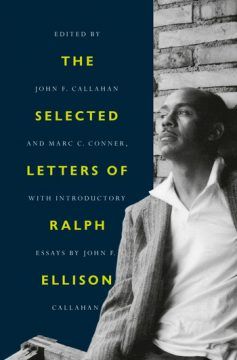James Nguyen in iai:
 Suppose that you’re interested in how false beliefs – ‘fake news’ – spread across a population. The problem is extraordinarily complicated. What people come to believe depends on a myriad of factors: which news outlets they read; who their friends and colleagues are; their ability to distinguish between fact and fiction; their social media echo chamber; and so on. A very good way of investigating a complicated phenomenon is to model it. This involves the construction of a simplified version of it and the investigation of the behaviour of that simplified version in order to draw conclusions about the actual system of interest. Both of these steps require a curious and playful outlook.
Suppose that you’re interested in how false beliefs – ‘fake news’ – spread across a population. The problem is extraordinarily complicated. What people come to believe depends on a myriad of factors: which news outlets they read; who their friends and colleagues are; their ability to distinguish between fact and fiction; their social media echo chamber; and so on. A very good way of investigating a complicated phenomenon is to model it. This involves the construction of a simplified version of it and the investigation of the behaviour of that simplified version in order to draw conclusions about the actual system of interest. Both of these steps require a curious and playful outlook.
We can play around with different ways to model the spread of fake news. A creative suggestion is to model it as a disease. A simple way to do this is to take a toy model from epidemiology, e.g. the susceptible, infected, recovered (SIR) model, and to reinterpret it. We might divide the population into three groups: those who believe some relevant falsehood, those who are susceptible to coming to believe it if they are influenced by someone who already does; and those who won’t be persuaded. The first group are infected; the second are susceptible; and the third recovered/immune. By playing with the model, investigating what follows from the equations that are used to present it, we discover that model populations can develop ‘herd immunity’: by keeping the proportion of susceptibles low enough (where ‘low enough’ depends on the rate at which the disease spreads and the rate at which those infected recover) we can avoid epidemics. By applying the model to the spread of fake news in the world an analogous conclusion is reached: in order to avoid it becoming epidemic we can work on (i) lowering the proportion of people in the population who are susceptible to believing it; (ii) decreasing the rate at which it is spread; and (iii) increasing the rate at which those who believe it ‘recover’. By playing with the model – both in terms of thinking of creative ways to represent the original system, and investigating the result – we have simplified a complex question into something more tractable.
More here.

 A person with a genetic condition that causes blindness has become the first to receive a CRISPR–Cas9 gene therapy administered directly into their body. The treatment is part of a landmark clinical trial to test the ability of CRISPR–Cas9 gene-editing techniques to remove mutations that cause a rare condition called Leber’s congenital amaurosis 10 (LCA10). No treatment is currently available for the disease, which is a leading cause of blindness in childhood. For the latest trial, the components of the gene-editing system – encoded in the genome of a virus — are injected directly into the eye, near photoreceptor cells. By contrast, previous CRISPR–Cas9 clinical trials have used the technique to edit the genomes of cells that have been removed from the body. The material is then infused back into the patient. “It’s an exciting time,” says Mark Pennesi, a specialist in inherited retinal diseases at Oregon Health & Science University in Portland. Pennesi is collaborating with the pharmaceutical companies Editas Medicine of Cambridge, Massachusetts, and Allergan of Dublin to conduct the trial, which has been named BRILLIANCE.
A person with a genetic condition that causes blindness has become the first to receive a CRISPR–Cas9 gene therapy administered directly into their body. The treatment is part of a landmark clinical trial to test the ability of CRISPR–Cas9 gene-editing techniques to remove mutations that cause a rare condition called Leber’s congenital amaurosis 10 (LCA10). No treatment is currently available for the disease, which is a leading cause of blindness in childhood. For the latest trial, the components of the gene-editing system – encoded in the genome of a virus — are injected directly into the eye, near photoreceptor cells. By contrast, previous CRISPR–Cas9 clinical trials have used the technique to edit the genomes of cells that have been removed from the body. The material is then infused back into the patient. “It’s an exciting time,” says Mark Pennesi, a specialist in inherited retinal diseases at Oregon Health & Science University in Portland. Pennesi is collaborating with the pharmaceutical companies Editas Medicine of Cambridge, Massachusetts, and Allergan of Dublin to conduct the trial, which has been named BRILLIANCE. When the Japanese attacked Pearl Harbor, the United States was surprised and unprepared, but it was quickly freed of its illusions. The same does not hold true for the COVID-19 epidemic. The attack is underway and our defenses are down – but so far our illusions remain intact.
When the Japanese attacked Pearl Harbor, the United States was surprised and unprepared, but it was quickly freed of its illusions. The same does not hold true for the COVID-19 epidemic. The attack is underway and our defenses are down – but so far our illusions remain intact. I think I’m finally ready to come out as a
I think I’m finally ready to come out as a  Of all these correspondents, however, Albert Murray was the one who best drew out of Ellison both the literary lion and the streetwise sophisticate at his most unbuttoned and inventive. Murray was a couple years behind Ellison at Tuskegee and was teaching literature there when they began corresponding in 1950. While on the home stretch of Invisible Man, Ellison, feeling super-relaxed, concedes to Murray, as he could to no one else, that the book has become “just a big fat ole Negro lie, meant to be told during cotton picking time over a water bucket full of corn, with a dipper passing back and forth at a good fast clip so that no one, not even the narrator himself, will realize how utterly preposterous the lie actually is.” In Murray (a novelist and critic of comparable stature whose own side of the decade-long exchange can be found in 2000’s Trading Twelves), Ellison found a boon companion with whom he could comfortably revel in the foot-stomping, jump-dancing, blues-shouting verities of their shared cultural references and unfurl freewheeling inquiries into the literary masters (Hemingway, Malraux, and Faulkner, among others) who had nourished them since their respective youths.
Of all these correspondents, however, Albert Murray was the one who best drew out of Ellison both the literary lion and the streetwise sophisticate at his most unbuttoned and inventive. Murray was a couple years behind Ellison at Tuskegee and was teaching literature there when they began corresponding in 1950. While on the home stretch of Invisible Man, Ellison, feeling super-relaxed, concedes to Murray, as he could to no one else, that the book has become “just a big fat ole Negro lie, meant to be told during cotton picking time over a water bucket full of corn, with a dipper passing back and forth at a good fast clip so that no one, not even the narrator himself, will realize how utterly preposterous the lie actually is.” In Murray (a novelist and critic of comparable stature whose own side of the decade-long exchange can be found in 2000’s Trading Twelves), Ellison found a boon companion with whom he could comfortably revel in the foot-stomping, jump-dancing, blues-shouting verities of their shared cultural references and unfurl freewheeling inquiries into the literary masters (Hemingway, Malraux, and Faulkner, among others) who had nourished them since their respective youths. In mid-January, The New York Times
In mid-January, The New York Times  Setting aside these internecine disputes, after the very long durée of his historical exegesis, what is Piketty’s main thesis? It is that the sharp growth in inequality of income and, especially, wealth we have seen in most Western societies in recent years is unsustainable. Furthermore, our traditional political parties find it impossible to engage with the problem. Taking the UK as an example, he argues that the two main parties are now led by the ‘Brahmin Left’, with Labour having become the party of the highly educated, its working-class roots withered, and the ‘Merchant Right’, who cling to the belief that loosely regulated free markets will deliver prosperity for all, one day. He argues that the trickle-down theory on which that latter assumption is based has given way to a trickle-up phenomenon, with the rich getting richer and the incomes of the middling sort stagnating.
Setting aside these internecine disputes, after the very long durée of his historical exegesis, what is Piketty’s main thesis? It is that the sharp growth in inequality of income and, especially, wealth we have seen in most Western societies in recent years is unsustainable. Furthermore, our traditional political parties find it impossible to engage with the problem. Taking the UK as an example, he argues that the two main parties are now led by the ‘Brahmin Left’, with Labour having become the party of the highly educated, its working-class roots withered, and the ‘Merchant Right’, who cling to the belief that loosely regulated free markets will deliver prosperity for all, one day. He argues that the trickle-down theory on which that latter assumption is based has given way to a trickle-up phenomenon, with the rich getting richer and the incomes of the middling sort stagnating. A study using neuroimaging led by Stony Brook University professor and lead author Lilianne R. Mujica-Parodi, Ph.D., and published in PNAS, reveals that neurobiological changes associated with aging can be seen at a much younger age than would be expected, in the late 40s. However, the study also suggests that this process may be prevented or reversed based on dietary changes that involve minimizing the consumption of simple carbohydrates.
A study using neuroimaging led by Stony Brook University professor and lead author Lilianne R. Mujica-Parodi, Ph.D., and published in PNAS, reveals that neurobiological changes associated with aging can be seen at a much younger age than would be expected, in the late 40s. However, the study also suggests that this process may be prevented or reversed based on dietary changes that involve minimizing the consumption of simple carbohydrates. Back in 2015, Bill Gates
Back in 2015, Bill Gates  In December 2015, Susan Fowler was settling into a new job as a software engineer at the technology-transportation company Uber when her boss sent her a series of disturbing chat messages. After asking how her work was going, Fowler’s manager, “Jake,” began complaining about inequities in his relationship with his girlfriend. “It is an open relationship, but it’s a little more open on vacations haha,” he wrote, to Fowler’s bewilderment. “She can go and have sex any day of the week. … It takes a herculean effort for me to do the same.”
In December 2015, Susan Fowler was settling into a new job as a software engineer at the technology-transportation company Uber when her boss sent her a series of disturbing chat messages. After asking how her work was going, Fowler’s manager, “Jake,” began complaining about inequities in his relationship with his girlfriend. “It is an open relationship, but it’s a little more open on vacations haha,” he wrote, to Fowler’s bewilderment. “She can go and have sex any day of the week. … It takes a herculean effort for me to do the same.” No doubt much will be written about this remarkable man who was one of the leading scientific and literary lights of the 20th century. His imagination and contributions ranged over an entire universe of disciplines – pure and applied mathematics, theoretical and particle physics, game theory, nuclear reactor and spaceship design, origins of life, space exploration and astrophysics, genetic engineering – whose only unifying thread seemed to be the diversity of ideas they contained. Most of these he explored in rigorous scientific papers with reams of mathematics; some of these he explored in elegant prose written for the general public. He made groundbreaking contributions to an untold variety of fields, and as evidenced on his
No doubt much will be written about this remarkable man who was one of the leading scientific and literary lights of the 20th century. His imagination and contributions ranged over an entire universe of disciplines – pure and applied mathematics, theoretical and particle physics, game theory, nuclear reactor and spaceship design, origins of life, space exploration and astrophysics, genetic engineering – whose only unifying thread seemed to be the diversity of ideas they contained. Most of these he explored in rigorous scientific papers with reams of mathematics; some of these he explored in elegant prose written for the general public. He made groundbreaking contributions to an untold variety of fields, and as evidenced on his  Aristotle, Niccolò Machiavelli, Alexis de Tocqueville, Adam Smith and Karl Marx grounded their philosophies in the understanding that there is a natural antagonism between the rich and the rest of us. The interests of the rich are not our interests. The truths of the rich are not our truths. The lives of the rich are not our lives. Great wealth not only breeds contempt for those who do not have it but it empowers oligarchs to pay armies of lawyers, publicists, politicians, judges, academics and journalists to censure and control public debate and stifle dissent.
Aristotle, Niccolò Machiavelli, Alexis de Tocqueville, Adam Smith and Karl Marx grounded their philosophies in the understanding that there is a natural antagonism between the rich and the rest of us. The interests of the rich are not our interests. The truths of the rich are not our truths. The lives of the rich are not our lives. Great wealth not only breeds contempt for those who do not have it but it empowers oligarchs to pay armies of lawyers, publicists, politicians, judges, academics and journalists to censure and control public debate and stifle dissent.  Murnane’s most compelling writing orbits around what he fails to express in life, what he cannot bring himself to say, what he has repressed. Even the faintest whiff (or glimpse, as it were) of sexuality carries a vestigial sense of shame and sinfulness for the writer. While some of his tenderest work concerns the men in his life (see also “Stream System”), some of his most unsettling work is rooted in his fear of ridicule by women, and his deeply ingrained aversion to direct expressions of sexuality, a hangover from his pious Catholic upbringing. Without this buried disquiet, Murnane’s serene ekphrasis of the contents of his mind might be insufferably tedious. In the quintessential Murnane story the narrator’s game of presenting blurred, half-remembered images that hint at a deeper subtext before gradually bringing them into focus, culminates in the narrator discovering something about himself that could only have been revealed by those images, further clarifying and strengthening the connections between the images in his image system. When it works, as it does the title piece and a few others, the result can be transcendent, the reader’s patience and sustained focus is rewarded.
Murnane’s most compelling writing orbits around what he fails to express in life, what he cannot bring himself to say, what he has repressed. Even the faintest whiff (or glimpse, as it were) of sexuality carries a vestigial sense of shame and sinfulness for the writer. While some of his tenderest work concerns the men in his life (see also “Stream System”), some of his most unsettling work is rooted in his fear of ridicule by women, and his deeply ingrained aversion to direct expressions of sexuality, a hangover from his pious Catholic upbringing. Without this buried disquiet, Murnane’s serene ekphrasis of the contents of his mind might be insufferably tedious. In the quintessential Murnane story the narrator’s game of presenting blurred, half-remembered images that hint at a deeper subtext before gradually bringing them into focus, culminates in the narrator discovering something about himself that could only have been revealed by those images, further clarifying and strengthening the connections between the images in his image system. When it works, as it does the title piece and a few others, the result can be transcendent, the reader’s patience and sustained focus is rewarded. Really great poetry is difficult to read. I don’t just mean it’s challenging, though it usually is. I mean it’s hard to make progress, because the density of meaning in the language stops you; it makes you read in loops. Alice Fulton has called poetry “recursive”: “It sends you back up the page as much as it sends you forward.” Because of this effect, it once took me all afternoon to finish reading John Ashbery’s long poem “Self-Portrait in a Convex Mirror” — I kept wanting to stop and start over again. Alice Notley’s best work feels this way: intensely recursive, almost too good to read. In its semantic density, great poetry gives you the sense you’ve skipped over and missed some available shade of meaning. You certainly have.
Really great poetry is difficult to read. I don’t just mean it’s challenging, though it usually is. I mean it’s hard to make progress, because the density of meaning in the language stops you; it makes you read in loops. Alice Fulton has called poetry “recursive”: “It sends you back up the page as much as it sends you forward.” Because of this effect, it once took me all afternoon to finish reading John Ashbery’s long poem “Self-Portrait in a Convex Mirror” — I kept wanting to stop and start over again. Alice Notley’s best work feels this way: intensely recursive, almost too good to read. In its semantic density, great poetry gives you the sense you’ve skipped over and missed some available shade of meaning. You certainly have. Gopnik humanises the man who pretended to be a monster. In his fey and mother-dominated youth in hard-boiled Pittsburgh, Warhol is actually endearing. He began life in among the murk of the steel mills, where the churches of the eastern European immigrant workers were decorated with holy icons that served as models for his later portraits. He was a self-avowed sissy; his first job was as a shop-window decorator in a local department store, and when he moved to New York he offered himself to advertising agencies as a specialist in drawing female footwear. A college contemporary remembers him as a cuddly bunny, and Gopnik, risking gooiness, repeatedly describes his behaviour as ‘lovely’ and exclaims over the ‘sweet little presents’ he bestowed on friends. What some took to be arrogance was a reflex, Gopnik suggests, of paralysing shyness. Once Warhol’s aloof persona was in place, he claimed not to believe in love, but Gopnik sees in his long trail of failed relationships a thwarted quest for ‘coupledom’.
Gopnik humanises the man who pretended to be a monster. In his fey and mother-dominated youth in hard-boiled Pittsburgh, Warhol is actually endearing. He began life in among the murk of the steel mills, where the churches of the eastern European immigrant workers were decorated with holy icons that served as models for his later portraits. He was a self-avowed sissy; his first job was as a shop-window decorator in a local department store, and when he moved to New York he offered himself to advertising agencies as a specialist in drawing female footwear. A college contemporary remembers him as a cuddly bunny, and Gopnik, risking gooiness, repeatedly describes his behaviour as ‘lovely’ and exclaims over the ‘sweet little presents’ he bestowed on friends. What some took to be arrogance was a reflex, Gopnik suggests, of paralysing shyness. Once Warhol’s aloof persona was in place, he claimed not to believe in love, but Gopnik sees in his long trail of failed relationships a thwarted quest for ‘coupledom’.